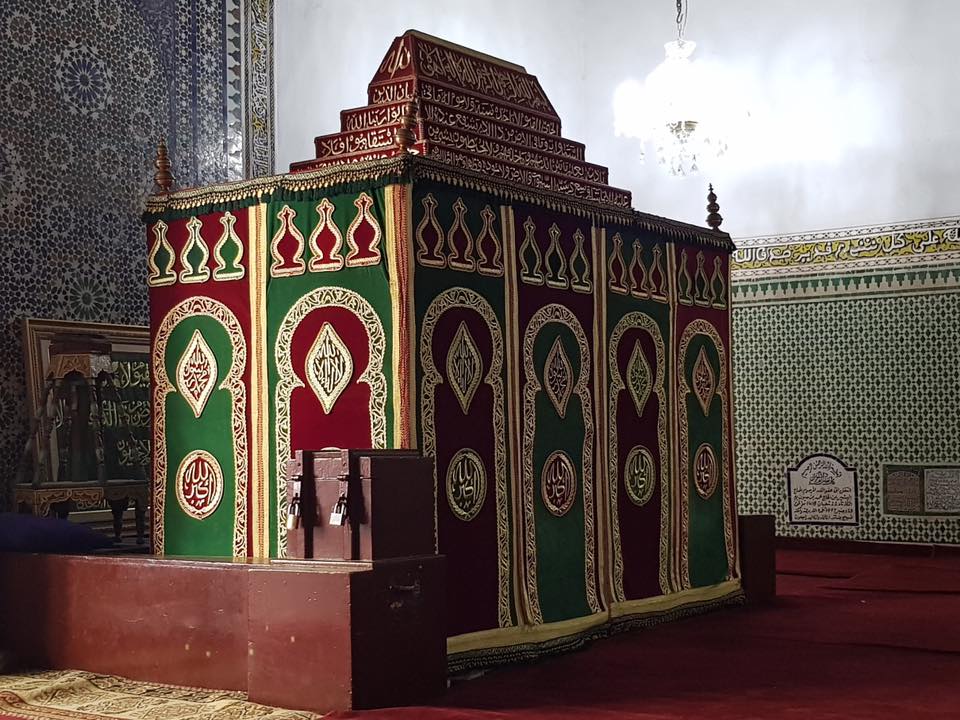
In the annals of Islamic spirituality, few works have touched as many hearts and been recited by as many lips as the Dala'il al-Khayrat (Proofs of Good Deeds), a collection of prayers upon the Prophet Muhammad that has become one of the most beloved devotional texts in Islamic history. Its author, Imam Muhammad ibn Sulayman al-Jazuli, was not merely a compiler of prayers but a spiritual master who transformed the landscape of Moroccan Sufism in the fifteenth century and whose influence continues to resonate throughout the Muslim world more than five centuries after his death.
Abu Abdullah Muhammad ibn Sulayman ibn Abi Bakr al-Jazuli al-Simlali al-Hasani was born around 1404 CE (circa 807 AH) in the Sus region of Morocco, the historic area situated between the Atlantic Ocean and the majestic Atlas Mountains. He belonged to the Berber tribe of Jazula, from which he derived his name "al-Jazuli," while "al-Simlali" indicated his connection to the Simlala area within Sus.
Most significantly, Imam al-Jazuli claimed descent from the Prophet Muhammad through his noble grandson Imam Hasan ibn Ali, making him a Sharif (descendant of the Prophet). His full genealogical chain traces back as follows: Abu Abdullah Muhammad al-Jazuli al-Hasani, son of Abd al-Rahman, son of Abu Bakr al-Murtada, son of Sulayman, son of Sa'id, son of Ya'la, son of Yakhluf, son of Musa, son of Yusuf, son of Abdullah, son of Jundun, son of Abd al-Rahman, son of Hassan, son of Isma'il, son of Ja'far, son of Abdullah, son of Abu Muhammad al-Hasan, the Prophet's grandson and sweet basil.
This noble lineage was not merely a source of pride but carried with it a profound sense of responsibility to honor the Prophet's legacy through both scholarship and spiritual practice—a mission that would define his life's work.
Imam al-Jazuli spent the early part of his life in rural Morocco, where he began his Islamic education locally. Recognizing the need for more advanced study, he traveled to Fez, the intellectual capital of Morocco, where he enrolled at the Madrasat al-Saffarin (formerly known as Madrasat al-Halfawiyyin). The room where he studied and resided in this madrasa is still pointed out to visitors today, and according to some accounts, it was in this very room—or perhaps in the nearby Qarawiyyin library—that he would later compose his masterpiece, Dala'il al-Khayrat.
In Fez, Imam al-Jazuli immersed himself in the Islamic sciences, mastering works of legal theory (usul al-fiqh) and Maliki jurisprudence. He memorized foundational texts such as Ibn al-Hajib's Mukhtasar al-Far'i and Sahnun's al-Mudawwana al-Kubra. His scholarship was comprehensive, encompassing Quranic exegesis (tafsir), hadith, jurisprudence (fiqh), and legal principles.
One of the most transformative relationships of his educational journey was with the renowned scholar and mystic Ahmad Zarruq (d. 1493 CE). Zarruq was one of the most distinguished figures in Moroccan Islamic scholarship, known for his mastery of both the outward sciences (al-'ulum al-zahira) and the inward sciences (al-'ulum al-batina). Under Zarruq's guidance, Imam al-Jazuli studied Maliki fiqh texts while simultaneously receiving spiritual knowledge and training. This dual formation—combining rigorous legal scholarship with deep spiritual insight—would characterize his later teaching and influence.
After completing his studies in Fez and reportedly settling a tribal dispute, Imam al-Jazuli traveled to the Doukkala region, where his spiritual journey would take a decisive turn. There he met the great saint Abu Abdullah Muhammad Amghar (d. 850 AH/1446 CE), sheikh of the Banu Amghar and a master of the Shadhili Sufi order, who was actively engaged in resistance against Portuguese incursions into Morocco.
Shaykh Muhammad Amghar initiated Imam al-Jazuli into the Amghari branch of the Shadhiliyya tariqa, transmitting to him the spiritual practices, secrets, and methods of this path. Under his mentorship, Imam al-Jazuli received profound knowledge about the spiritual journey (suluk), learning the subtleties and ambiguities of the mystical path that would dazzle intellects. Through Amghar's teaching, he unlocked recondite aspects of Sufism and became one of its luminaries.
The depth of this training is reflected in the fact that Imam al-Jazuli spent fourteen years in khalwa (spiritual seclusion), a period of intensive worship, self-purification, and spiritual discipline. This extended retreat allowed him to refine his ego, deepen his connection with the Divine, and reach what his biographers describe as "the level of perfection," becoming a master (shaykh kamil) in his own right.
According to several sources, after the death of his spiritual master, Imam al-Jazuli undertook the pilgrimage to Makkah and visited the Prophet's mosque in Madinah. Some accounts suggest he spent approximately forty years traveling between Makkah, Madinah, and Jerusalem—though the exact duration and sequence of these journeys remain subjects of scholarly discussion.
What is certain is that his time in the holy cities, particularly in Madinah, profoundly influenced his spiritual orientation. It is reported that he would remain at the Prophet's mosque for extended periods, and that during this time, he recited what would become Dala'il al-Khayrat twice daily. This intimate connection with the Prophet's presence, both physical (through proximity to his blessed resting place) and spiritual (through intense devotional practice), became the wellspring from which his most famous work would flow.
The story of how Imam al-Jazuli came to compose Dala'il al-Khayrat has become one of the most beloved narratives in Islamic hagiography. According to tradition, the Imam once went on a journey and found himself in desperate need of water to perform ablutions for prayer. He came upon a well but had no bucket or rope with which to draw the water. His worry and distress grew as the time for prayer approached.
A young girl, seeing his predicament, approached to help him. She simply spat into the well, and miraculously, the water rose to the top of its own accord, allowing the Imam to perform his ablutions. Amazed by this extraordinary occurrence, he asked her: "How is this possible?"
The girl replied with disarming simplicity: "I was able to do this through my asking for blessings upon the Prophet, Allah's blessings and peace be upon him."
This encounter struck Imam al-Jazuli with tremendous force. If a young girl, through her simple practice of invoking blessings upon the Prophet (salawat), could manifest such spiritual power and divine favor, what heights might be reached through dedicated, comprehensive, and constant practice of this blessed devotion? It was this realization—witnessing firsthand the transformative power of salawat—that inspired him to compile Dala'il al-Khayrat, gathering prayers upon the Prophet from the Sunnah as well as through direct inspiration to his heart.
The Imam himself composed verses about his book:
"And if you see the Ego controlling you,
And it comes to lead you into the Fire of Desires,
Banish its desires by continuous blessing,
There is nothing to compare with Dala'il al-Khayrat.
With Dala'il al-Khayrat you must be firm,
Read it to obtain your wishes,
Lights appear and blaze thereby,
O my Brother, it is never to be abandoned."
Upon returning to Fez in 857 AH/1453 CE, Imam al-Jazuli completed the composition of Dala'il al-Khayrat wa Shawariq al-Anwar fi Dhikr al-Salat 'ala al-Nabi al-Mukhtar (Proofs of Good Deeds and Brilliant Lights in Remembrance of Blessings upon the Chosen Prophet). The work was divided into seven sections, one for each day of the week, making it accessible for daily recitation and allowing practitioners to complete the entire text weekly.
The book's impact was immediate and unprecedented. People of spiritual insight recognized it as an exclusive and exalted work, overflowing with the secrets of refinement and spirituality. The great Sufi scholar Muhammad al-Mahdi ibn Ahmad ibn Ali al-Fasi (d. 1109 AH) authored an entire book about Imam al-Jazuli's virtues titled Mumti' al-Asma' fi al-Ta'rif bi-al-Shaykh al-Jazuli wa-ma lahu min al-Atba' (The Delightful Hearing: Introducing Sheikh al-Jazuli and His Followers), from which many reports about the Imam have been preserved.
For over five hundred years, Dala'il al-Khayrat has been the most popular and universally-acclaimed collection of prayers upon the Prophet throughout the Muslim world. For more than three centuries, in the sacred precincts (Haramayn) of Makkah and Madinah, it was recited in daily gatherings after the Asr prayer. Millions of Muslims in the East and West, across countless generations, have recited it either in solitude in their homes or communally in mosques and Sufi lodges. The number of manuscript copies and printed editions remains unknown due to its extraordinary popularity—one of those rare books whose dissemination exceeds all counting.
The work has been surrounded by numerous commentaries (shuruh) by scholars seeking to unlock its meanings and explain its blessings. However, due to the many transmissions from the author and the resulting textual variations, scholars consider the most reliable version to be that transmitted by Abu Abdullah al-Saghir al-Suhaylī, one of Imam al-Jazuli's prominent students.
After completing Dala'il al-Khayrat, Imam al-Jazuli settled in Asafi (Safi) on Morocco's western coast, where he established the Jazuliyya tariqa and set up a zawiya (Sufi lodge). His reputation as a spiritual master spread rapidly, and thousands of students gathered around him—some sources mention that over twelve thousand disciples studied under him, though others cite even higher numbers reaching twenty thousand.
His teaching methodology emphasized personal discipline and refinement of the ego (nafs). As a spiritual master, he required his students to adopt the traditional Sufi garb—the patched cloak (muraqqa'a) and staff. They were required to fast regularly, practice solitary devotion, and strictly adhere to his methods of discipline. His explicit aim was nothing less than transforming his students into saints (awliya).
The Imam taught that the sanctity of the spiritual master (shaykh) with his disciples was analogous to the sanctity of the Prophet with his Companions. He believed firmly in adhering to authentic spiritual guides, teaching that through them one receives illumination (anwar), mercy (rahma), and secrets (asrar). His pedagogical approach combined the outward sciences of Islamic law with the inward sciences of spiritual realization.
Among his most illustrious students were:
These three latter students would become the teachers of the famous saint and spiritual master Abu Abdullah Muhammad ibn Isa al-Miknasi (d. 933 AH/1526 CE), ensuring the continuation of Imam al-Jazuli's spiritual legacy.
Imam al-Jazuli's recorded sayings, preserved in Mumti' al-Asma' and other sources, reveal a master concerned with both the intellectual and spiritual formation of seekers:
On Spiritual Diseases:"Know that one who carries any of the following three traits in his heart, he should repent to Allah. They are: pride of knowledge, bad character, and holding a bad opinion of people."
On the Saints:"The awliya (saints) think well of the people, while the general scholars have a low opinion of people."
On Direct Divine Knowledge:"The fully accomplished shaykh is one who can acquire knowledge from Allah without any means."
On Authentic Spiritual Realization:"The severed one is he who travels the path of discipline but does not attain the path of witnessing. When he goes to the people and calls them to Allah, then his propagation only remains at the level of discipline, because he has not arrived at the level of witnessing. The one who is fully accomplished is he who has arrived at the level of witnessing and is intoxicated in the lights of perfection, and nothing distracts him from the True King. When he goes to the people, he goes to them with lights, knowledge and wisdom. One who adheres to him learns and becomes illuminated, and his level of comprehension is unlike those who follow the severed ones."
On True Spiritual Authority:"It is not incumbent to follow every caller to Allah; the true caller to Allah is he who propagates with spiritual insight (basira)."
These teachings emphasize authentic spiritual realization over mere ritual practice, genuine inner transformation over superficial religiosity, and the necessity of following masters who have themselves attained the highest stations.
As Imam al-Jazuli's influence grew, so did the unease of secular authorities. The governor of Safi became increasingly concerned about the Imam's growing following and his outspoken criticism of local authorities, particularly their practice of accepting money from the Portuguese colonizers who were then establishing footholds along Morocco's Atlantic coast.
Fearing both the Imam's spiritual influence and his political criticism, the governor asked him to leave the city. Imam al-Jazuli complied, moving to a place called Afughal, south of Essaouira. Before departing, he is reported to have prayed against the people of Safi for their complicity with foreign powers and their persecution of righteous scholars.
According to tradition, within two years of his departure, the Portuguese conquered Safi and expelled the local population. Realizing the error of their ways and the connection between their misfortune and their treatment of the Imam, the people of Safi sought him out, hoping for his pardon and prayers. The Imam told them they would be forgiven after forty years. Remarkably, in the year 984 AH/1576 CE—exactly forty years later—the Muslims successfully retook Safi, fulfilling his prophecy.
Besides Dala'il al-Khayrat, Imam al-Jazuli authored several other works:
Hizb al-Falah (The Litany of Success), a shorter prayer text that sometimes appears alongside Dala'il al-Khayrat in certain manuscripts, though it has not achieved the same widespread fame.
Hizb al-Jazuli (also known as Hizb Subhan al-Da'im la Yazul - The Litany of Glory to the Eternal Who Does Not Cease), written in the Berber language of the Sus region, making it accessible to his native community.
A work on Sufism addressing various aspects of the spiritual path, demonstrating his comprehensive approach to Islamic spirituality.
These works, while less famous than Dala'il al-Khayrat, reveal the breadth of his scholarly and spiritual concerns.
The circumstances of Imam al-Jazuli's death combine tragedy with spiritual perfection. According to the most reliable accounts, the governor of Safi, unable to tolerate the Imam's criticism and fearful of his influence, had him poisoned. The poison took effect while Imam al-Jazuli was performing the Fajr (dawn) prayer.
On the 16th of Rabi' al-Awwal, 870 AH (approximately October 1465 CE), the Imam died in the second prostration (sujud) of the first unit (rak'ah) of the Fajr prayer—meeting his Lord while in the most humble position of worship. Some sources place his death slightly later, between 1465 and 1470, but the date of 870 AH is considered most reliable.
Sayyidi al-Mahdi al-Fasi, the author of his biography, declared: "Muhammad ibn Sulayman al-Jazuli was upon the greatest rank of the Truthful Ones (Siddiqiyyat al-'Uzma) and he was also a martyr (shahid) due to the poisoning." This dual honor—spiritual mastery and martyrdom—elevated his status even further in the eyes of his followers.
He was buried the same day, after the Zuhr (midday) prayer, in the mosque he had built in Afughal. His tomb immediately became a center of visitation and spiritual blessing, and eventually became the focal point of Sa'di dynasty resistance against Portuguese colonization. The deep respect the Sa'dis held for Imam al-Jazuli was the reason that Abu Abdullah al-Qa'im, the Sa'di leader, chose Afughal as his residence, making the Imam's tomb the spiritual headquarters of the resistance movement.
One of the most extraordinary aspects of Imam al-Jazuli's story occurred long after his death. In 940 AH/1534 CE—approximately seventy years after his burial—Sultan Abu al-Abbas al-A'raj of the Sa'di dynasty ordered that the Imam's remains be transferred to Marrakesh. The ostensible reason was to prevent tribesmen from exhuming his body, but it may also have been motivated by a desire to bring this source of spiritual blessing to the capital city.
When they opened the grave, those present were astonished to find that Imam al-Jazuli's body remained completely uncorrupted, as fresh as the day he had been buried seventy years earlier. There were no signs of decomposition whatsoever. Some witnesses reported that when they pressed their fingers against the skin of his blessed face, blood rose to the surface as though he were still alive. Even the marks from his final shave on the day of his death were clearly visible, as if the shaving had been done recently rather than seven decades earlier.
Contemporary Islamic scholars noted that nothing had changed in his condition throughout the intervening seventy years. This incorruptibility was understood as a sign of his sanctity and spiritual rank, and they decided not to cover his noble body with fresh earth when reburying him.
The body was transferred to Marrakesh with great ceremony and buried in the Riyad al-'Arus (Garden of Brides) area of the city. Sultan Ahmad al-A'raj (r. 1517-1544 CE) constructed a mausoleum over his tomb in the northern part of Marrakesh's medina. This mausoleum was later enlarged and partially rebuilt during the reigns of Sultans Moulay Isma'il and Mohammed III, reflecting the continuing veneration of the Imam across different dynasties.
The tomb of Imam al-Jazuli in Marrakesh became enveloped in what visitors describe as tremendous majesty (jalal), shining light (nur), and manifest spiritual force (quwwa zahira). People have congregated around his noble grave continuously since its establishment, reading Dala'il al-Khayrat over it in recognition of his authorship of this blessed work.
Numerous accounts speak of the fragrance of musk emanating from his tomb, pervading the entire mosque and surrounding area. The mausoleum became a hub for people of virtue and the spiritually elite, a gathering place for those seeking closeness to God through proximity to His saints. To this day, it remains one of the major pilgrimage sites in Morocco.
Imam al-Jazuli is counted among the Seven Saints of Marrakesh, and his tomb is one of the seven stations visited during the traditional pilgrimage to these blessed figures instituted by Sultan Moulay Isma'il. His mausoleum stands as one of the spiritual fortresses of Marrakesh, a city renowned throughout the Islamic world for its concentration of saints and spiritual masters.
The influence of Imam al-Jazuli extends far beyond his immediate students and even beyond his famous book. He established a distinctive approach to Sufism that balanced rigorous legal adherence with intense spiritual practice, orthodox theology with mystical experience, social engagement with personal refinement.
The Jazuliyya tariqa he founded became one of the most important Sufi orders in Moroccan history, producing numerous sub-branches and influencing the development of Moroccan Islam for centuries. His emphasis on sending blessings upon the Prophet became a defining characteristic of Moroccan Sufism and helped establish the practice as central to Islamic devotion throughout North and West Africa.
The spiritual lineage (silsila) extending from Imam al-Jazuli includes many of Morocco's most celebrated saints and scholars. His student Abd al-Aziz al-Tabba' would train Muhammad ibn Isa al-Miknasi, who in turn would influence generations of spiritual seekers. The Jazuliyya order played a significant role in resistance against Portuguese colonization, combining spiritual authority with political action in defense of Muslim lands.
Perhaps most remarkably, Dala'il al-Khayrat became a truly universal text, transcending sectarian, geographical, and cultural boundaries. It has been recited by Sunnis of all schools, by scholars and commoners, by Arabs and non-Arabs, in mosques from Morocco to Indonesia, from the Balkans to Sub-Saharan Africa. The practice of gathering after Asr prayer to recite it, which continued for centuries in the Haramayn, became a distinctive feature of communal Islamic worship.
Great scholars like Singapore's Habib Nuh al-Habshi (may Allah be pleased with him) made recitation of Dala'il al-Khayrat a regular practice, ensuring its transmission to modern times. The book continues to be printed and distributed worldwide, with beautiful illuminated manuscripts preserved in collections such as the Chester Beatty Library in Dublin, testifying to the artistic and spiritual significance Muslims have attached to this work.
Imam al-Jazuli's life offers multiple lessons for seekers of all eras. He demonstrated that authentic spirituality requires both outward learning and inward realization, that legal knowledge must be complemented by spiritual insight, that scholarly achievement should lead to character refinement.
His response to seeing a young girl's spiritual power—rather than feeling diminished, he was inspired to greater devotion—exemplifies the humility necessary for spiritual growth. His fourteen years in seclusion before teaching publicly show the importance of deep preparation and personal transformation before guiding others. His willingness to criticize injustice even at personal cost demonstrates the courage required of spiritual leaders.
His emphasis on constant remembrance of the Prophet Muhammad as the key to spiritual opening reflects the central importance of prophetic love (mahabbat al-nabi) in Islamic spirituality. Through his example and his writings, he taught that the path to God passes through love of and connection with the Prophet, that the highest spiritual states are attained through intimate attachment to the Chosen One, and that sending blessings upon him (salawat) is not merely a legal obligation but a key that unlocks divine mysteries.
Imam Muhammad ibn Sulayman al-Jazuli stands as one of the towering figures of Moroccan Islamic history and indeed of Islamic spirituality as a whole. Born in the mountains and valleys of Sus, educated in the ancient halls of Fez, spiritually formed in the deserts and sanctuaries of Morocco and the Hijaz, he embodied the best of the Islamic tradition—combining impeccable scholarship with profound spiritual realization, personal piety with social engagement, strict discipline with overflowing love.
His Dala'il al-Khayrat has proven to be one of those rare works that touches something universal in the human spirit. For over five centuries, it has been the means by which countless Muslims have deepened their connection to the Prophet Muhammad, experienced spiritual openings, found comfort in difficulty, and drawn closer to the Divine Presence. That such a text continues to be recited daily by Muslims across the globe is a testament to both its intrinsic power and its author's elevated spiritual rank.
The miracle of his incorrupt body, preserved for seventy years after death, serves as an outward sign of an inner reality: that the friends of God (awliya Allah) transcend normal limitations, that sanctity manifests in both spiritual and physical ways, and that those who dedicate their lives entirely to God are preserved by Him in ways that amaze and inspire others.
As we reflect on Imam al-Jazuli's life and legacy, we are reminded that true greatness lies not in worldly achievement but in closeness to God, that the most enduring works are those that help others draw near to the Divine, and that a single life lived in complete dedication can illuminate the path for millions who follow.
May Allah sanctify his secret, multiply the rewards of his spiritual gifts, and grant us the blessing of following his example in love of the Prophet and devotion to the Divine Presence. May his intercession benefit us, and may the light that emanates from his tomb continue to guide seekers until the Last Day. Amin.
"O Allah, benefit us through Your righteous Friends, and pour their spiritual sustentations over us at all times."
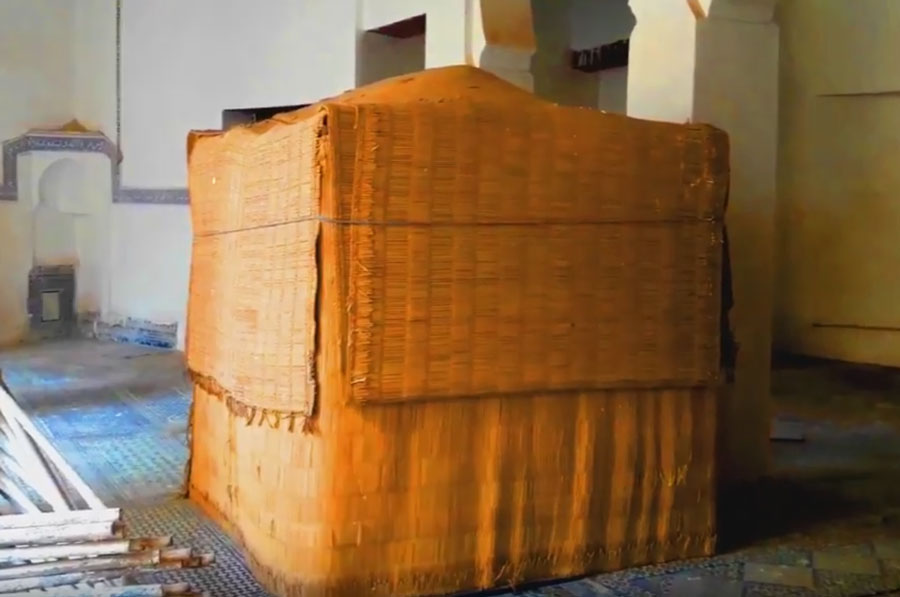
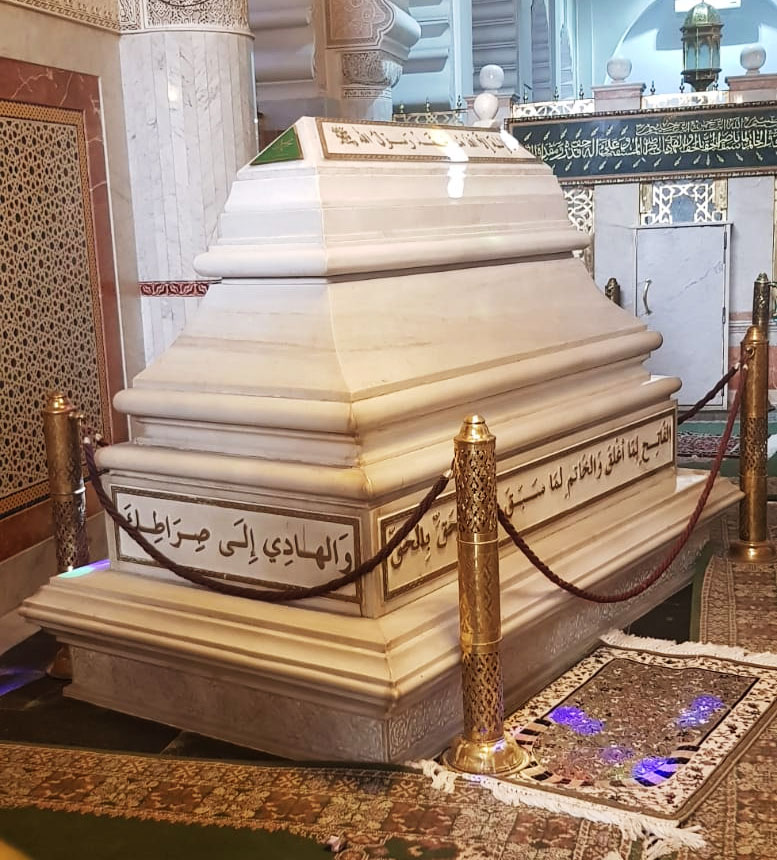

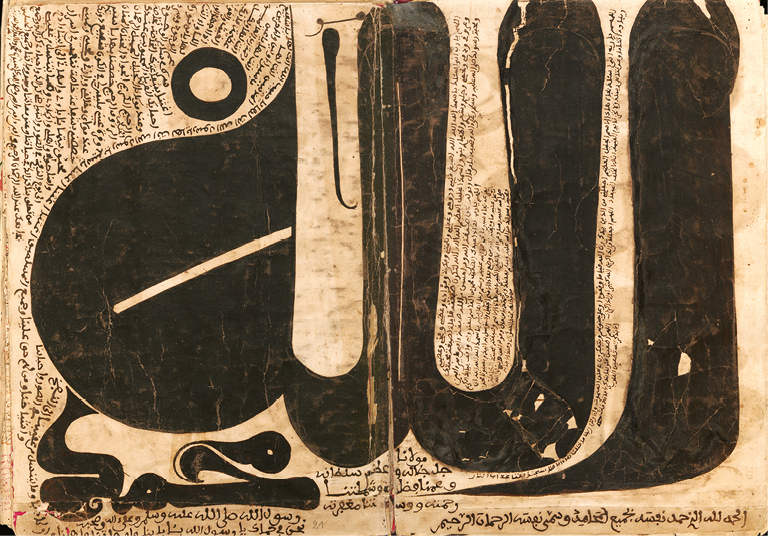
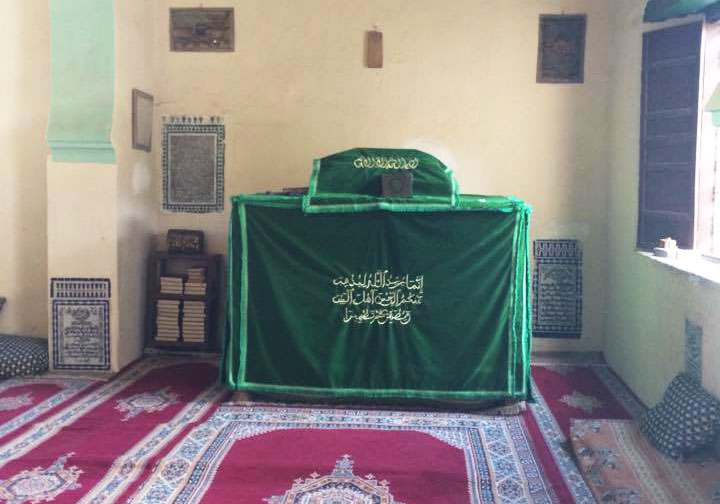

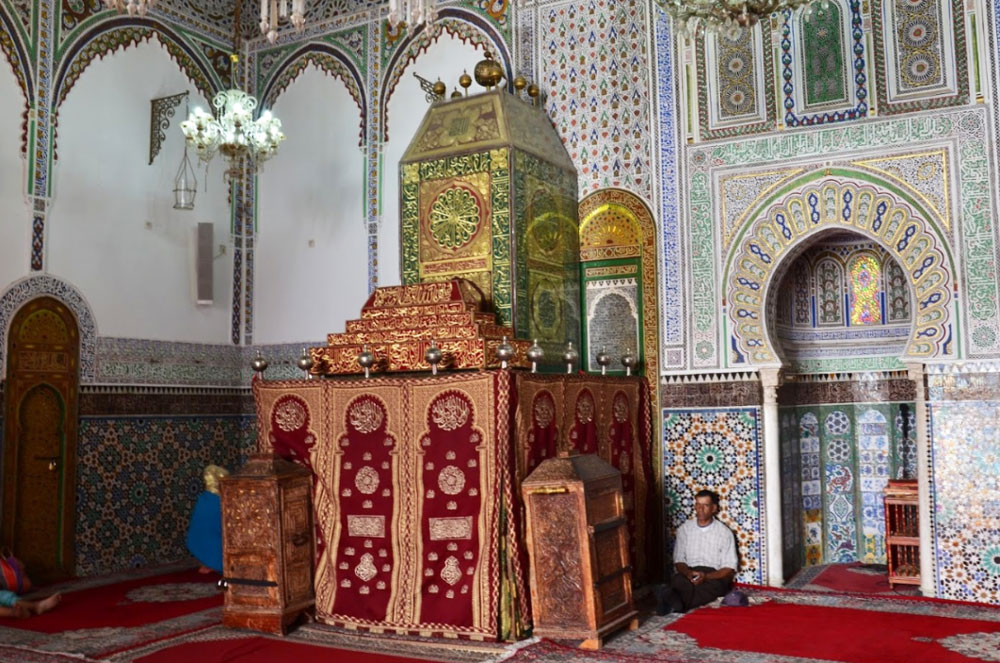
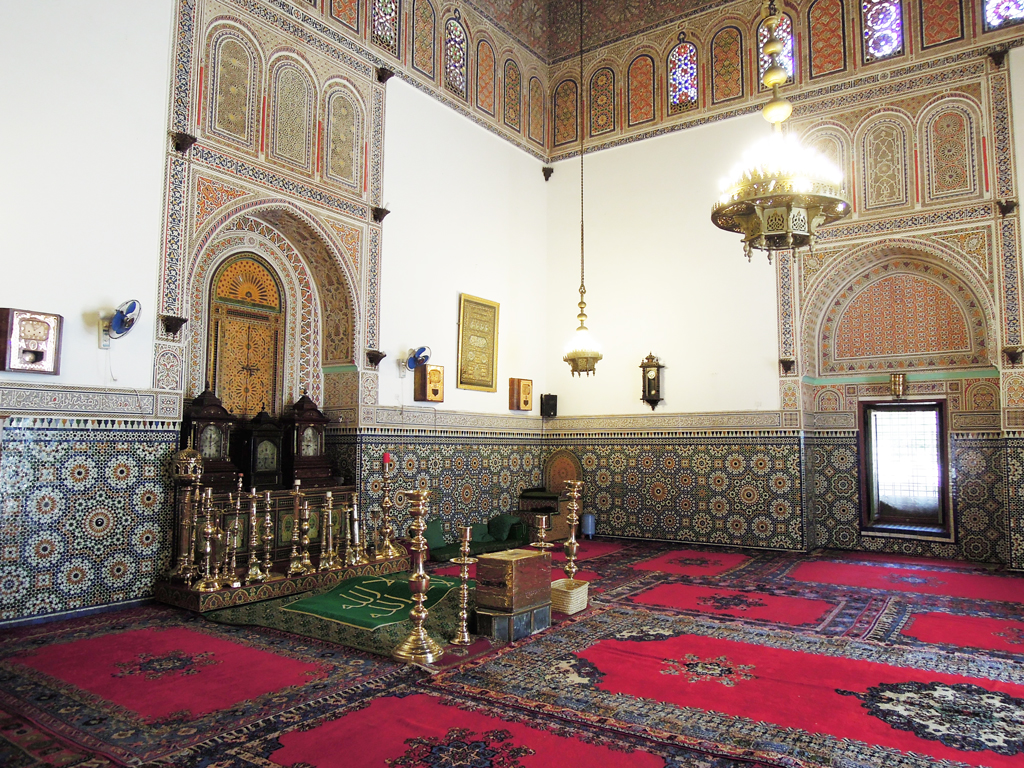





























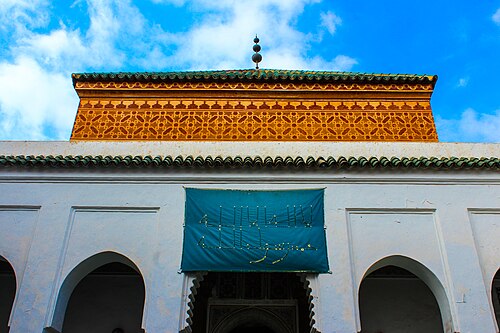
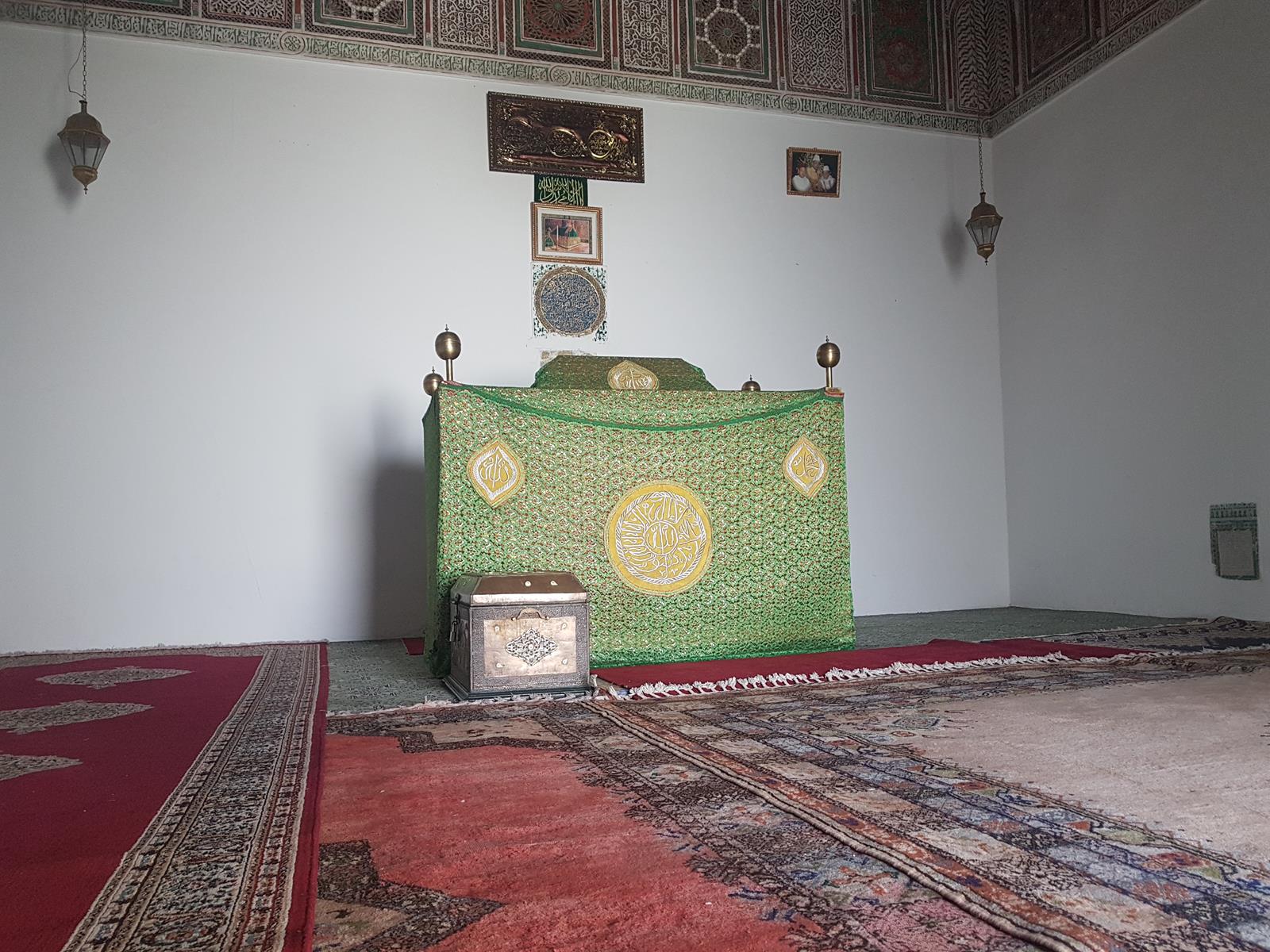




Find all our meditations on the Nur App!
Experience tranquillity through Qur'anic recitations and meditations on our Nur App and develop healthy spiritual routines to maintain your God-given Nur (light).
